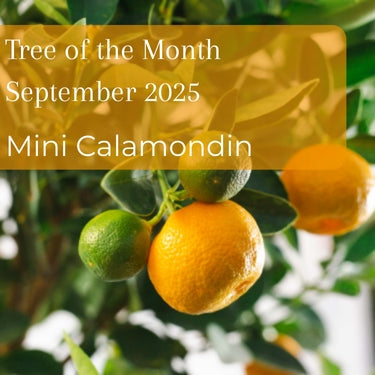With so many types of tea available it’s hard to believe most of them actually come from the same leaves on the same plant, and, it’s a plant you can grow right in your back garden.
Grow your own tea from the beautiful, evergreen Camellia sinensis plant. The bushy, evergreen shrub has beautiful fragrant leaves and delicate white flowers that bloom over autumn. The easy to grow plant is usually grown in areas such as India, China and Africa however they’ve also been found to thrive in the UK climate.
 The difference in the colours and flavourings of different teas such as green and black is down to how to leaves are processed and the levels of oxidation they go through, with green tea being the least oxidised and black tea being the most.
The difference in the colours and flavourings of different teas such as green and black is down to how to leaves are processed and the levels of oxidation they go through, with green tea being the least oxidised and black tea being the most.
The process of each tea leaf also differs, some require more effort than others. White tea requires the least hands on work whereas Oolong tea is a little more complex.
When harvesting the leaves always pluck the new, tender, apple green growth (also known as the ‘flush’). The adult leaves that have had time to mature will be tough and stringy with an unpleasant bitter taste. When the leaves are harvesting this also helps to encourage new bushy growth. Buds can also be included in the harvest and used to add other flavours to the tea.
Not only is it delicious tea can be praised as a health drink bringing many benefits to the body and if you’re choosing to make your own at home you know there’s no nasty surprises and everything is completely organic.
How do you make home-made tea?
Green Tea:
Green tea has many health benefits including reducing inflammation, improving brain function and aiding weight loss. It uses the ‘freshest’ leaves, with very simple processing. No oxidation is required so the leaves keep their lush, green colour.
- When the new flush of leaves come, pinch the top 2 leaves from each stem. Harvesting for green tea is best done around early spring time.
- Heat the leaves for 1-2 minutes in a steamer on a cloth until the leaves start to wilt and turn a slightly darker green. Make sure not to cook the leaves while steaming them. They should never become too hot to handle and should be scrunched in the cloth throughout.
- Roll the now soft leaves into narrow tube shapes, this can be done by hand or with the help of a sushi mat. The rolling allows enzymes in the leaf to be released giving the tea leaves their flavour.
- The final step is drying. Preheat your oven to 100-110 degrees celsius and allow to dry gently dry 10 minutes ensuring to turn halfway through for an even drying. Make sure not to burn the leaves during this step.
- When the leaves are fully dry they can be used straight away or stored in an airtight container.
White Tea:
White tea is one of the most popular teas in the world and requires very little processing. Only very slight oxidation is needed making it the simplest out of the all the teas to make.
- Harvest your tea leaves and buds - Like with green tea, the best flavour comes from young leaves and buds picked in early spring.
- The leaves should then be withered on a tray in a shaded area of a warm humid room with good air circulation. This can be done for a few hours or at least till the leaves look like they are just about to dry out.
- Once the leaves have lost around 80% of their moisture they are ready to be gently dried in the oven.
- The oven should be pre heated again to 100-110°C and leaves placed into dry, stirring and turning as you go.
- No rolling is required for white tea and as soon as the leaves have been dried they are ready to use or store.
Black Tea:
Black teas are heavily processed and go through the most oxidation giving it the dark colour and rich, intense flavour.
- Start by harvesting leaves like any other tea.
- Before you can let the leaves wither they need to be ‘bruised’ to aid the release of theaflavins and thearubigins enzymes. This can be done by hand or placed in the cloth to be rolled and crushed. Very large batches of leaves can be bruised with a rolling pin.
- Once the leaves have been evenly bruised they should be left to oxidise. Again, place the leaves in a humid, shaded room with good air circulation and let oxidise and wither for around 3 days. They leaves will turn from green to a deep red in colour. Don’t let the leaves dry out completely in this stage.
- To complete the oxidation process heat and dry leaves in a preheated oven of 100-110 degrees celsius. This needs to be gentle to avoid affecting any flavour.
- Once fully dried the leaves are ready to use and can be stored in an airtight container.
Oolong Tea:
Oolong tea can vary in oxidation but is still quite heavily processed with it requiring withering and bruising. It’s becoming increasingly popular containing many health benefits. It sits in the middle of most black teas and green teas.
- Harvest the flush of leaves and buds from the camellia.
- The freshly picked leaves should be left to wither in direct sunlight, the withering and oxidation process for Oolong takes. Make sure to stir the leaves in intervals. As the leaves start to dry they will slowly turn red at the edges.
- Rather than rolling, the leaves should be shaken in a cloth so just the edges are bruised. Bruising is also seen as part of the withering process for Oolong tea.
- Gently dry the leaves in a preheated oven for 10-20 minutes keeping an eye on them so they don’t burn.
- Once fully dried the leaves are ready to use and can be stored in an airtight container.
Once you’ve got the hang of processing and drying your own tea leaves try experimenting with different ingredients and flavours for different flavours and benefits. Try adding some lavender, jasmine or hibiscus flowers which you can also grow at home. There are plenty of fragrant, edible plants out there to compliment the flavours of each tea beautifully.
Check out our stunning little tea plant, the perfect gift for a tea lover or simply just to treat yourself. Have family and friends brewing their own homegrown tea in no time and exploring new delicious flavours and aromas.


